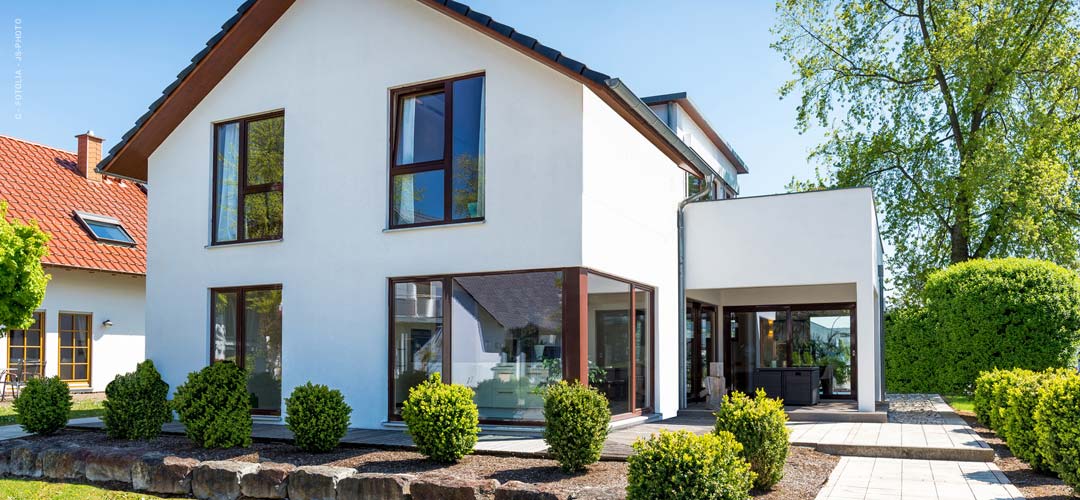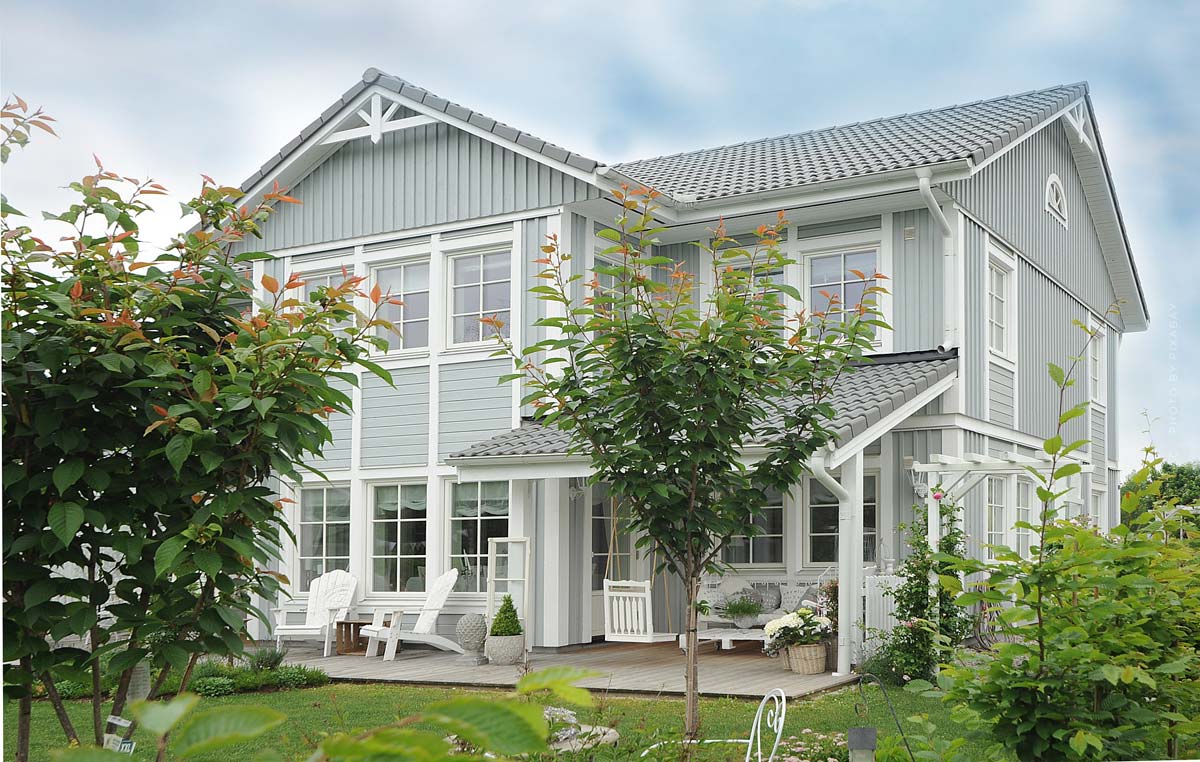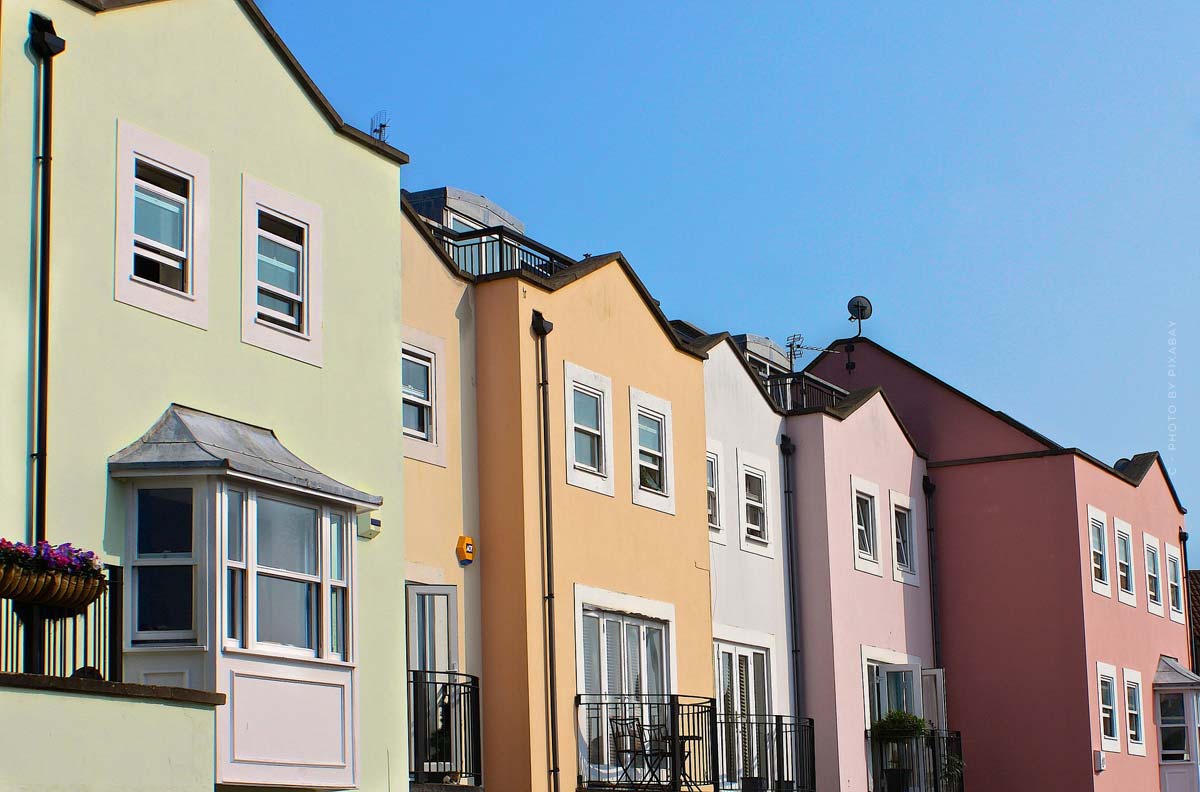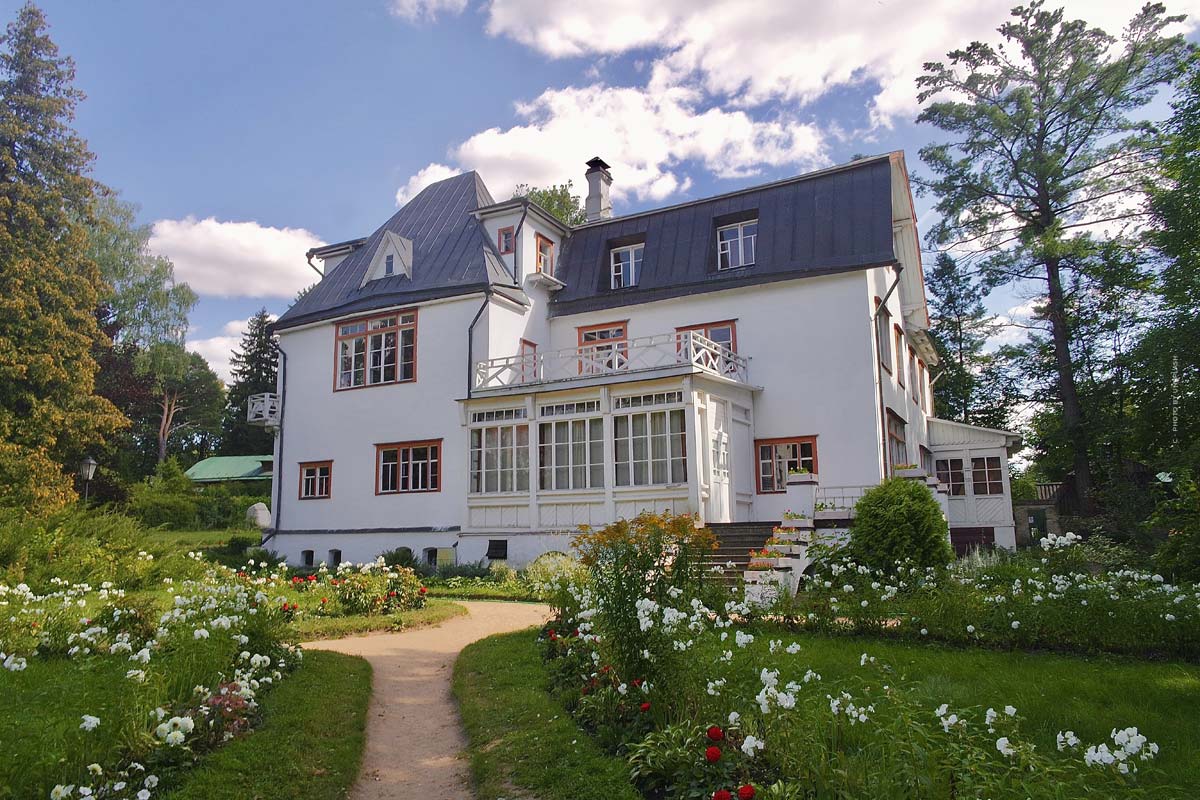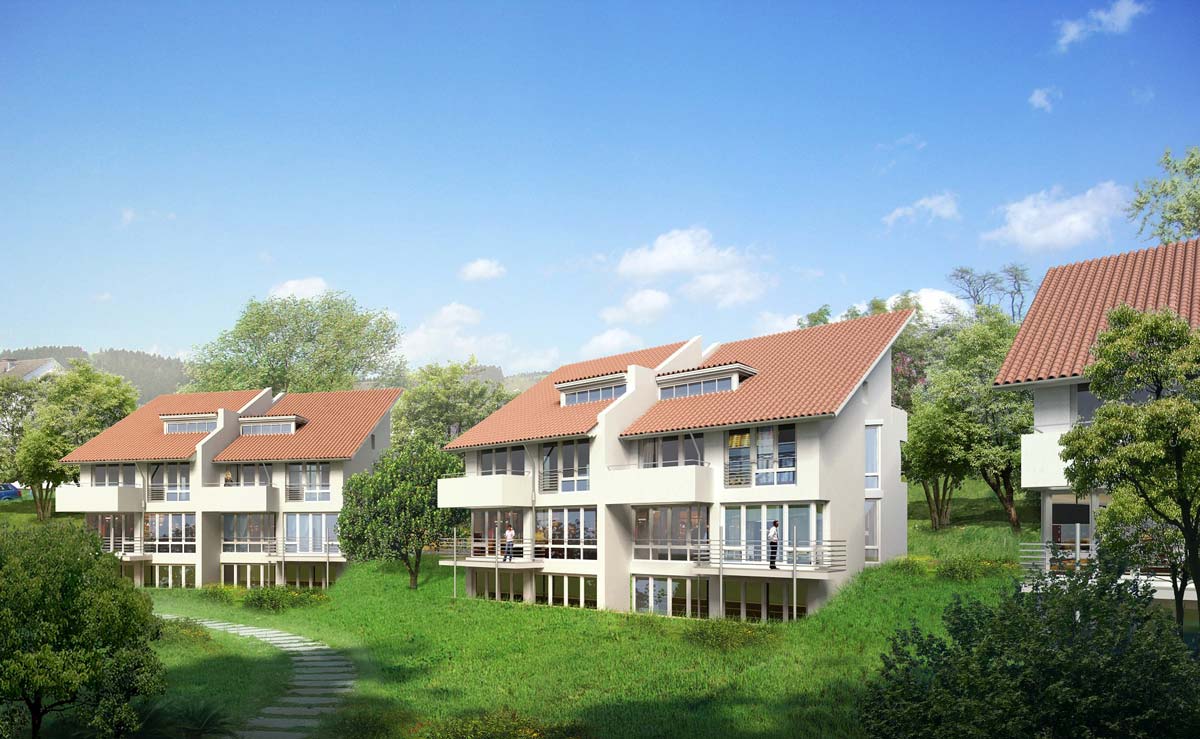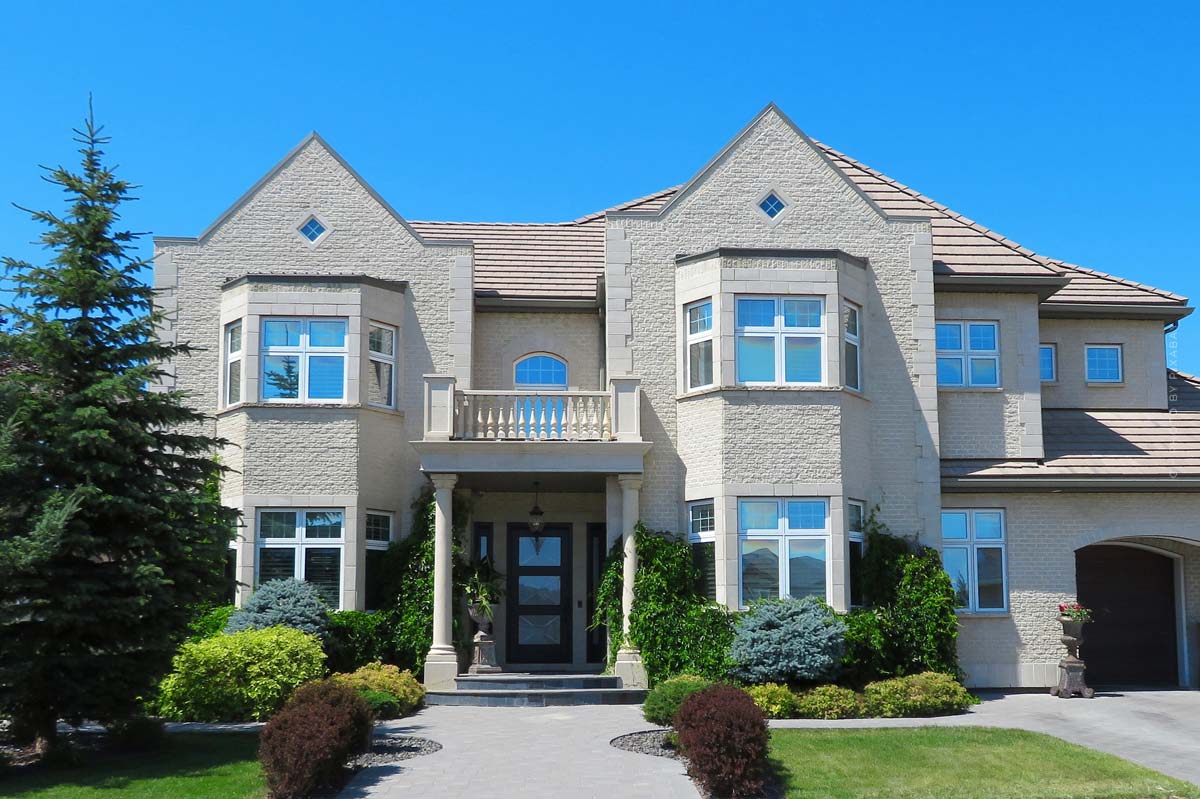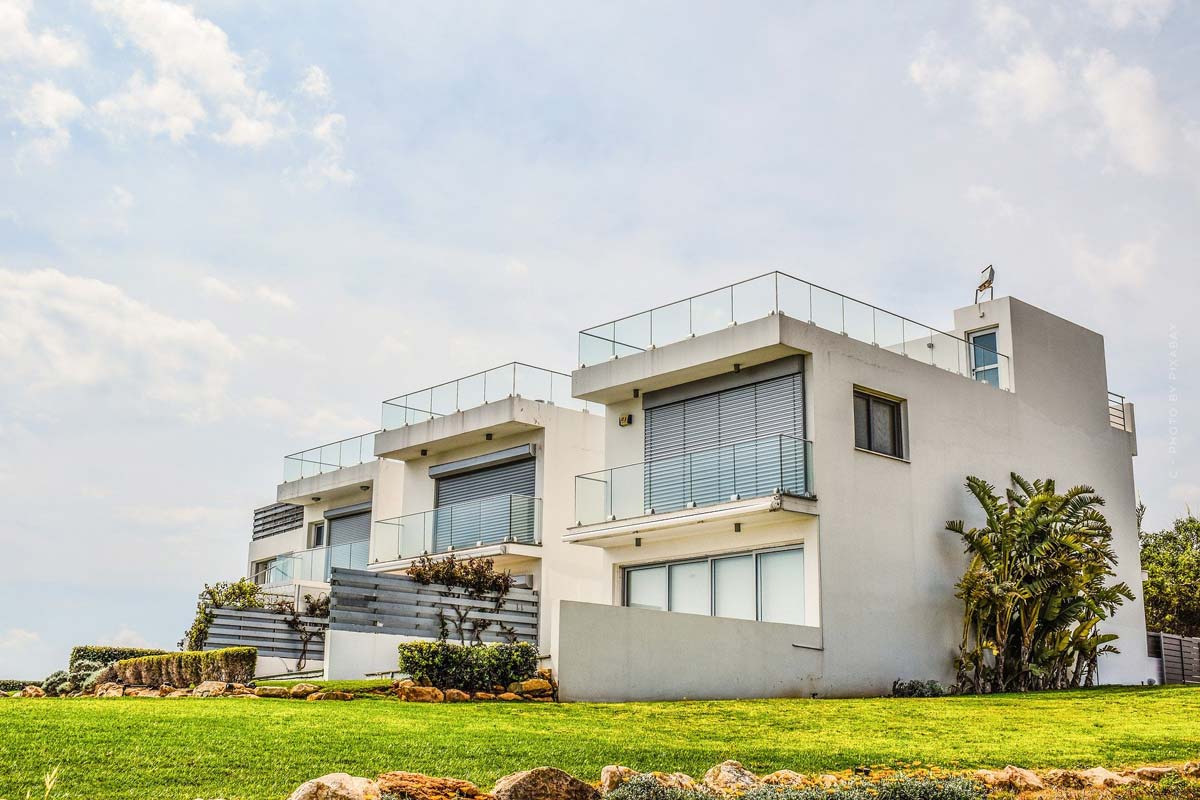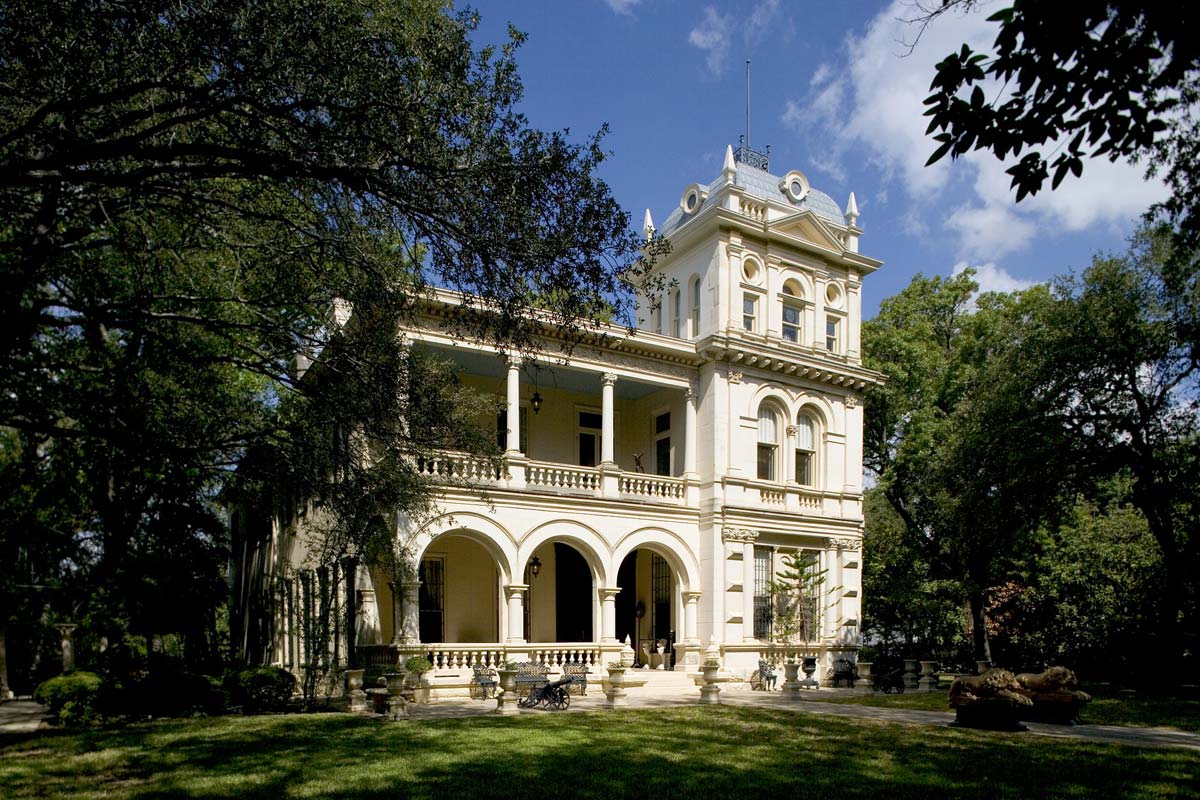Prefabricated house: advantages & disadvantages at a glance, as well as costs and house types in comparison
Prefabricated house – The desire for a first own house is very big, especially as a young adult, and it is a big step: buy a house. Many feel the need to start a family and then live in the property of their dreams. If you’re planning to do this, you should start by asking yourself what kind of house you’d like to live in – bungalow, terraced house or
Prefabricated house: what do you mean by this?
What is actually a prefabricated house? This question is very difficult to answer, because this type of house is very diverse. Most providers have a large repertoire of prefabricated house types and you are spoilt for choice. Do you want to live in a detached house? In a housing estate or rather a bungalow? With a cellar, garage and garden? These are all important aspects that you should and can consider when planning your house. Because a prefabricated house is one thing above all: versatile.
Tip! In this article you can find videos with testimonials from builders and experts that you can also benefit from: Buy or build a house?
Are you looking for the right house? Then check out our guide! Here you will find definitions, meanings and lots of information: House types from A-Z
Features: special construction, many house types possible
The main feature of a prefabricated house is the special construction method. It is not built stone on stone on site. The individual house elements are created in production halls and only pulled up on your property and fastened together. The main material in this type of house is wood. However, you have the option of mixing it with concrete or lightweight concrete to make it more weatherproof. Another special feature is the fast construction time and the lower costs compared to a solid house. So if you want to move into your own home quickly, you should definitely consider a prefabricated house.
Building services: electrics, pipes & co. planned in from the outset
No matter whether you want to build a prefabricated house or a solid house. A new building is almost always modern and state-of-the-art in terms of technology. The special thing about a prefabricated house is that the building services are planned into the structural elements right from the start. You have the advantage that you only have one supplier who takes care of all areas in your house. This means that the electronics do not have to be agreed with a third person/company and are integrated and planned from the beginning. Only advanced heating systems are used and of course energy saving is taken into account.
Advantages & disadvantages of a prefabricated house: Fast, low prices, inflexible?
The biggest advantages of a prefabricated house are mainly the fast construction time and the low construction costs. Despite this, one must also note with this type of house that there are some disadvantages that one should not lose sight of. The question you have to ask yourself is: solid construction or prefabricated house. Here we will present you the advantages and disadvantages of a prefabricated house, so that you can form your own opinion.
Advantages: fast construction time and lower costs
As already mentioned, the most striking advantages are the fast construction time and the low construction costs compared to a solid house. The ease of planning is also a plus point, as you only have one contact person for all topics relating to house construction. The house technology is already co-ordinated during the planning and is considered in the production of the individual construction elements. At the same time, new prefabricated houses in most cases have a high energy efficiency and are also up to date in this area. Another advantage is that construction can take place in any weather.
- Fast construction time
- Lower construction costs
- Good plannability due to a single contact person
- High energy efficiency
- Integrated building services
- Construction independent of weather conditions
Disadvantages: hardly any design options
One of the disadvantages is the limited individuality. With a prefabricated house you cannot design the layout yourself and have to lower your expectations. In addition, the building material is not as qualitative as with a solid construction and therefore the sound insulation is worse. This is also a reason why the resale value is lower.
- Hardly any design options
- Poor sound insulation
- Low resale value
Source: Prefabricated house (Lukinski.de)
Prefabricated house: For whom is this type of house suitable?
For whom is a prefabricated house suitable and who can live in it? Of course, it is up to you to decide where and in which house you want to live. Nevertheless, a prefabricated house is particularly suitable for a few groups of people due to its concise advantages. We have summarized and listed these for you.
Families: quickly into the new house
Young families are probably the main prospective buyers of a prefabricated house. As you have already learned in the course of the article, a prefabricated house is inexpensive and goes quickly. Because of this, it is very attractive to young adults. Most of the time, these people do not have too much money yet to afford a big solid house and therefore they have to take a smaller loan with this type of construction. At the same time, with a prefabricated house, you don’t have to worry about all the little things. You have a single contractor overseeing everything and moving forward quickly. In that time, you can take care of your kids or go to work. So you’re spared a huge time commitment.
Seniors & Pensioners
A prefabricated house is also ideal for pensions or senior citizens. The main argument here is the lack of work. You should sit down with your provider at the beginning and plan the construction. After that, everything will be done on its own and you won’t have to deal with small details. There are also prefabricated houses in the bungalow style. This type of house is especially appealing to seniors because there are no stairs. If you want to learn more about the
bungalow, feel free to check out our article on it.
Energy-efficient prefabricated houses: passive house, low-energy house & Co.
Saving energy is an important topic. Our generation in particular must pay special attention to our environment and everyone should do their part. This must also be taken into account when building houses. New buildings are built to the latest standards and must therefore comply with various guidelines. Energy-efficient construction is also an important topic for prefabricated houses. Here you can find out everything you need to know about this important area.
Energy-saving building with insulation, solar energy & more
The modern construction method of a prefabricated house brings above all a saving effect with itself. The various elements are made in advance, which has the advantage that no materials are wasted. Everything will be up to date and you also have the possibility to build your prefabricated house as a plus energy house. It is best to find out in advance what your builder offers and whether you agree with it. If you want to learn more about energy-saving construction, you can read everything important in our guide.
Tip! Learn more about the house types low-energy house, passive house and
zero-energy house here!
Have a prefabricated house built: Construction time and show houses
If you decide to buy a prefabricated house and have it built from scratch, you will have to decide on a certain type of house and calculate and plan the expected construction time. You can find out more about the topics of construction time and model house below.
Construction time: Planning, building permit & Co.
The construction time of a prefabricated house is in any case significantly shorter than for a solid construction, but you can never specify an exact duration, because something can always come up and the wishes of the customer vary. The big advantage of a prefabricated house is that the individual house elements are built beforehand in a hall and only have to be joined together on the building site. This usually only takes a few days and can be done in any weather. In order to be able to plan approximately, we have compiled a list with the approximate times per work step.
- Planning: up to several weeks
- Building permit: 0.5-3 months
- Production: 2-5 weeks
- Shell: 1-3 days
- Interior work: 8-12 weeks
Show houses: examples and role models
This is probably one of the biggest advantages of choosing a prefabricated house. You have the opportunity to inspect your future home beforehand and see if everything meets your expectations. Many sellers have a small town of mother houses that you can visit. Get an idea of their repertoire and also take the opportunity to go inside the house. You can think about the interior design, plan your house and also make changes if you want to.
Turnkey house: from planning to moving in
Not all prefabricated houses are the same. In contrast to a solid house, it is possible with this type of construction to hand over the house to the customer in different stages. This naturally results in a price difference between the houses. For example, you have the option of having only the individual parts of your house manufactured and doing the final construction on your own. This would save you money. Here you can read more about the different stages.
Different stages Prefabricated houses: Kit house or finishing house
Kit houses: In this prefabricated house variant, the provider does not undertake any construction work and is only responsible for the procurement of materials. In this case, the customer is responsible for the construction and also responsible for it. A possibility would be it to require hollow wall elements with the offerer and to fill these then on the building site with concrete. This would be a solid construction variant. In general, however, it is advisable that only experienced builders should build a kit house.
Finished houses: When a house is handed over in a weatherproof condition and only basic interior work remains to be done, it is referred to as a finished house. For example, non-load-bearing interior walls could still be put in place, pipes or flooring laid. If the house is handed over at this stage, the builder/customer still has some work to do to move in which saves money but also takes time. Here, too, the builder should bring craft experience and support (friends, family).
What does turnkey mean?
The house is called turnkey when it is completely built. It is weatherproofed and all plumbing and flooring is in place. The customer only has to put in his personal furniture, paint the walls if necessary and decorate it. There are no more own contributions necessary, nevertheless, you should specify everything in the contract with this variant, so that nothing is missing at the end.
Advantages and disadvantages of a turnkey house
One of the advantages of a turnkey house is definitely the time saved. In most cases, a prefabricated house takes between five and nine months to build. In this time you hardly have to deal with your house construction and have time for other things. In addition, all costs are already clarified in advance and all work is supervised by the supplier.
One disadvantage is definitely the cost. If you don’t have any experience, you won’t be able to buy the house at an earlier stage and do the rest yourself. If you do have this experience, you will lose time and certainly nerves on the building site. Likewise, you have only a small scope for design in the room layout.
Comparison: prefabricated house and solid house – who wins?
Prefabricated house or solid house? That is the question here! You have now informed yourself about a prefabricated house and also learned about the advantages and disadvantages. Now you have to make the choice whether you want to opt for this type of house or are more interested in a solid construction. We have compared the two types of houses for you and summarized them compactly. If you would like to learn more about the topic of solid houses, you are welcome to take a look here.
Prefabricated house: inspection before construction possible
The advantages you have already learned in the course of the article. In summary, it can be said that it is fast and the costs are low and fixed from the beginning. You can also take a look at your house in advance by visiting a park with show houses.
- Short construction time
- Low and fixed costs
- Visit to a show house park
One of the disadvantages is that you can rarely change the room layout of a prefabricated house and this is only done by a few suppliers. Also, good thermal insulation is only available in energy-efficient houses.
- Individual room design restricted
- Thermal insulation only for energy-efficient houses
Solid house: Robust, individual design and resale value
The advantages of a solid house are, for example, that you can plan from the beginning and customize your house and room design. As long as there are no load-bearing walls, it is possible to construct rooms according to your wishes. Another advantage is the more balanced indoor climate, the better quality and the higher resale value.
- Individual room design
- Better indoor climate
- Better quality of construction
- Higher resale value
The higher price and the longer construction time is definitely a disadvantage, especially if you want to move into your own home quickly. In addition, you have more effort and have to put a lot of energy into building a house. In contrast to a prefabricated house, you also don’t have the opportunity to inspect your future house beforehand, as it is built individually according to your ideas. In addition, you have not only one, but several providers, with whom you must clarify everything.
- Long construction time
- Higher costs
- More effort
- Viewing in advance not possible

